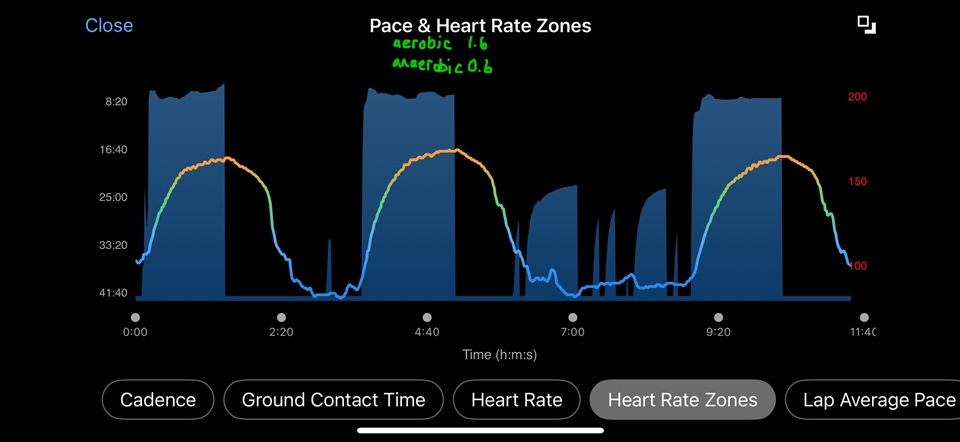I believe that Garmin does not give you anaerobic effect in a running activity if you do not reach Z5. Can anyone confirm or refute this?
I have a Garmin FR 255 and use a chest strap HR sensor.
On my Garmin profile:
MHR: 191
LTHR: 170
Z5: >172 (90-100% of MHR)
I can usually obtain anaerobic primary benefit when doing sprint/hill repeat intervals (about one minute fast and one minute walk), but there are many times Garmin gives me high aerobic primary benefit instead. I believe that Garmin doesn't give you anaerobic effect in a running activity if you do not reach Z5.
For example, I did a recent 8x hill sprint workout (1 minute fast, 2 minutes recovery) and got high aerobic primary benefit. The HR chart shows clear HR peaks and valleys. My HR was getting down to around 110 each recovery, but the peaks were 167, 170, 171, 171, 172, 172, 172, 173. I think Garmin gave me high aerobic primary benefit because half of my intervals did not reach Z5.
It's confusing because it's much easier to obtain anaerobic benefit on non-running activities. For example, I got anaerobic benefit for one hour of recreation volleyball. For that activity, my average HR was 122, my highest HR was 162, and most of my HR peaks were under 150 (<78% MHR).
I'm thinking of changing my HR zones so that Z5 starts a little lower, maybe 88% MHR . It's frustrating when I do a difficult anaerobic workout and Garmin doesn't reflect that.







